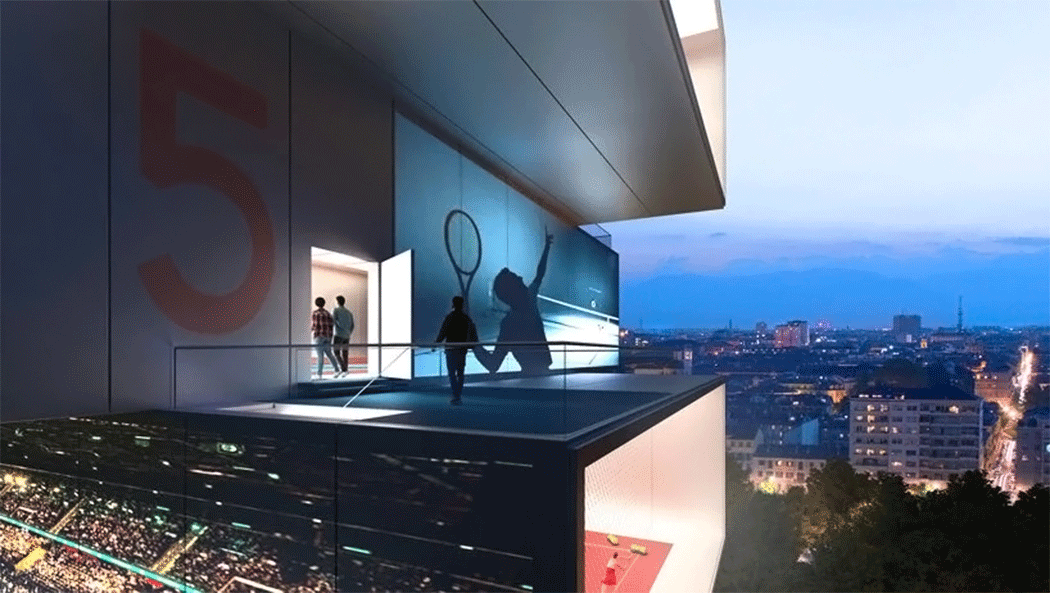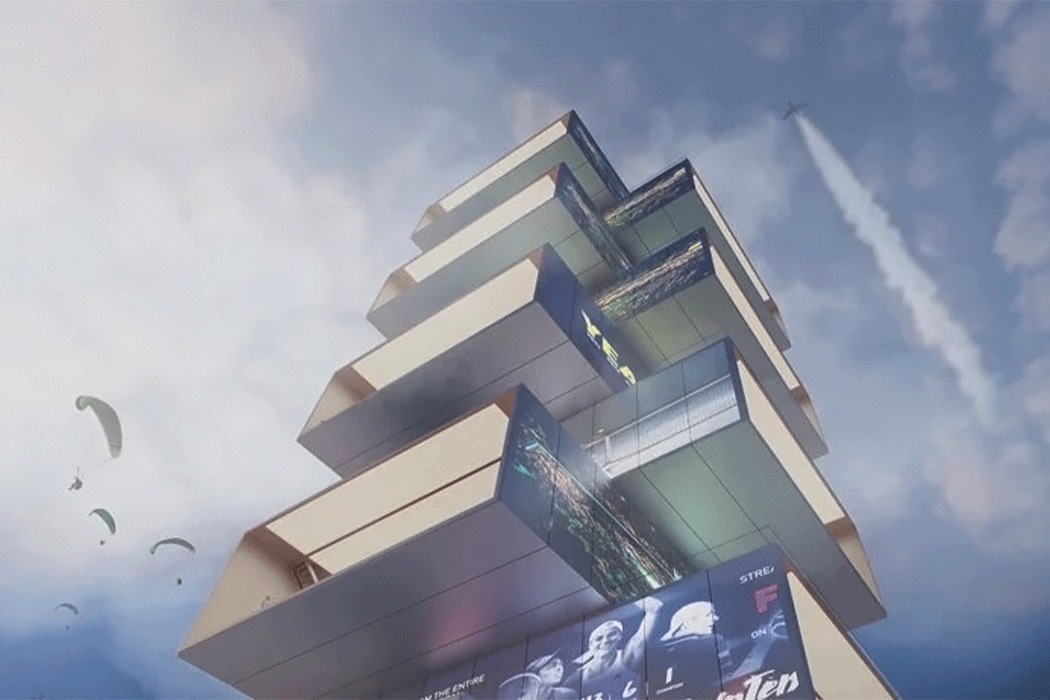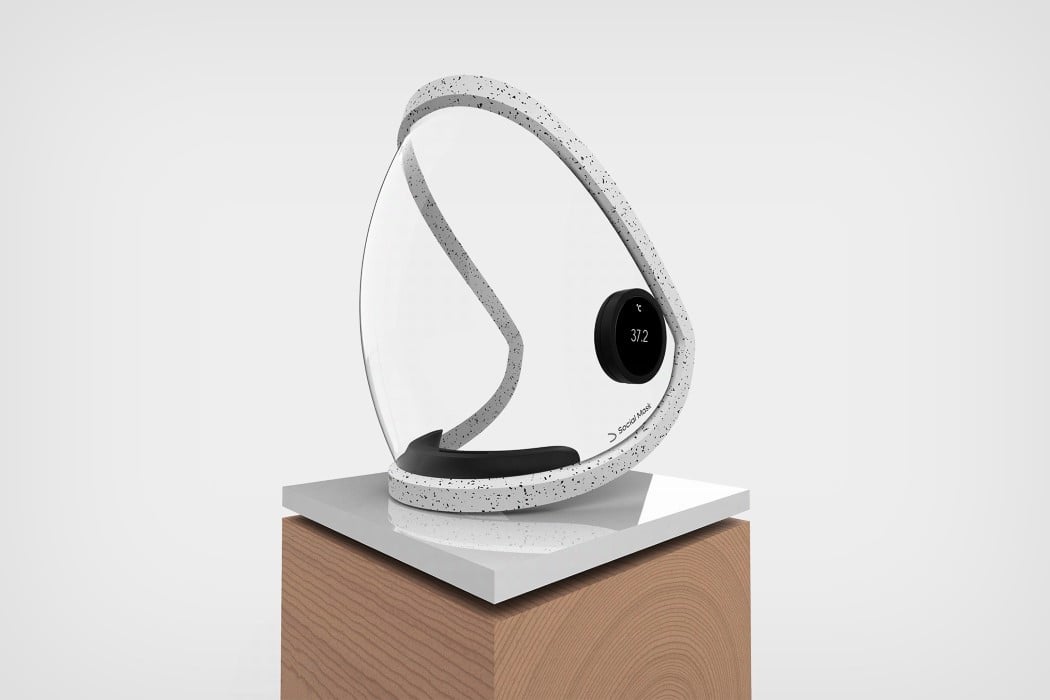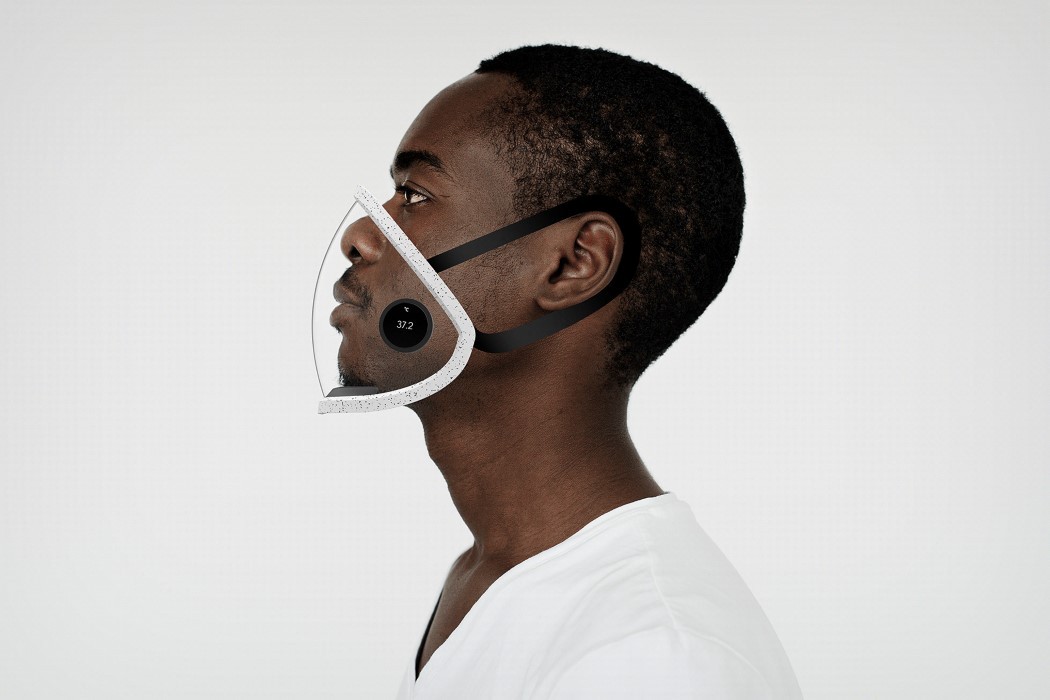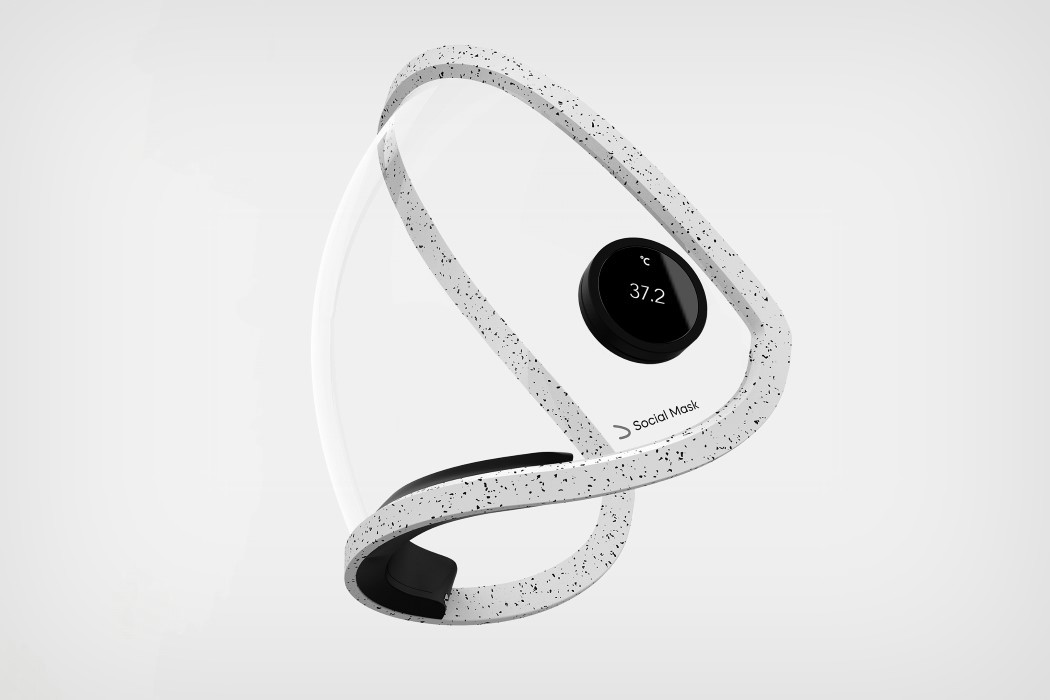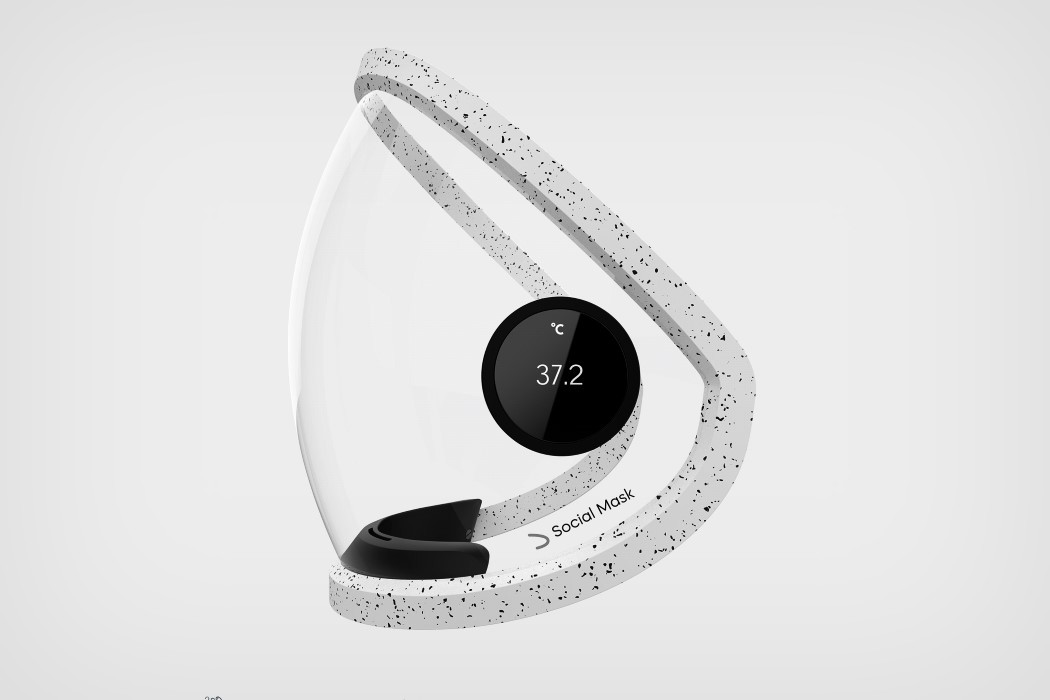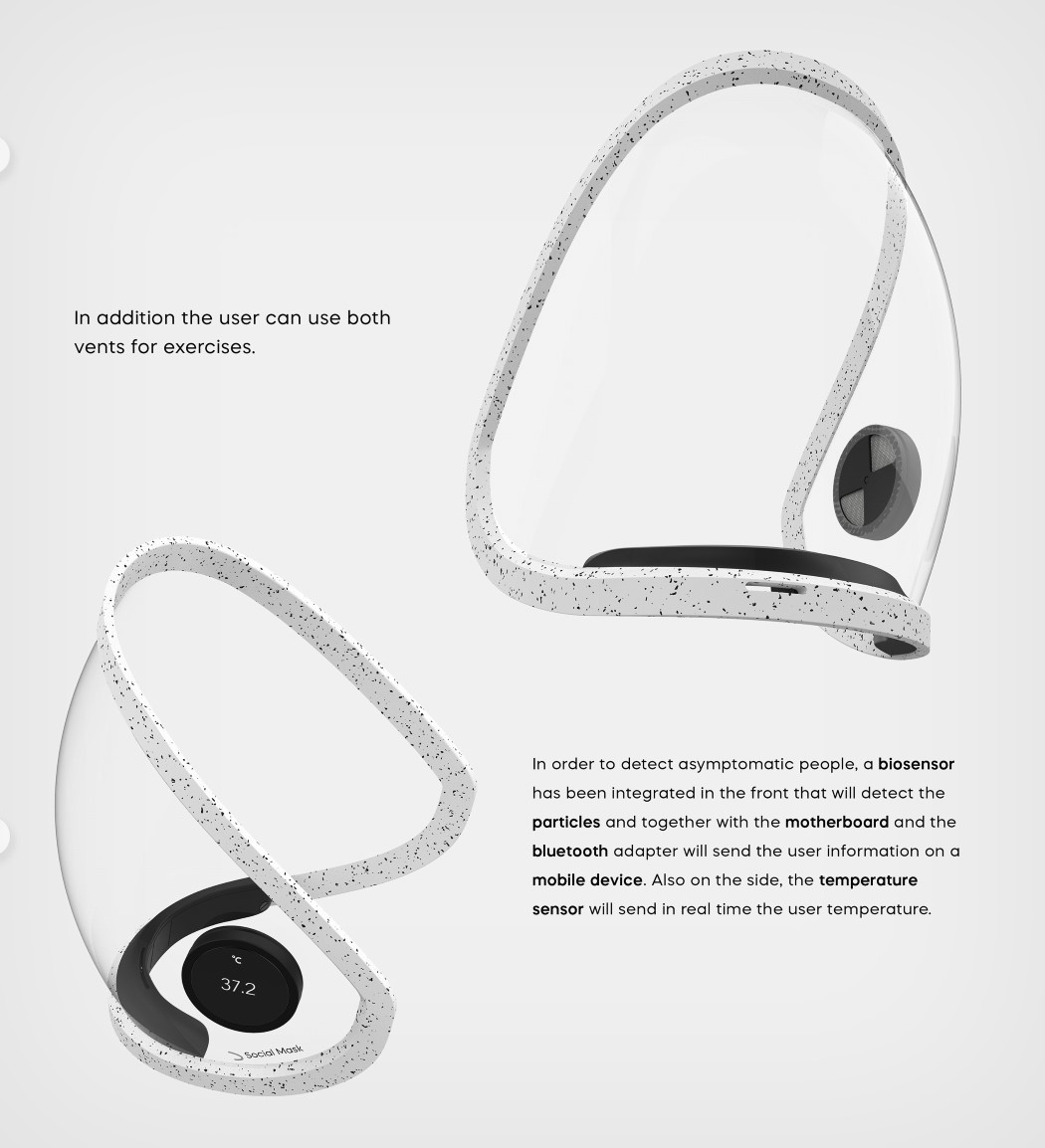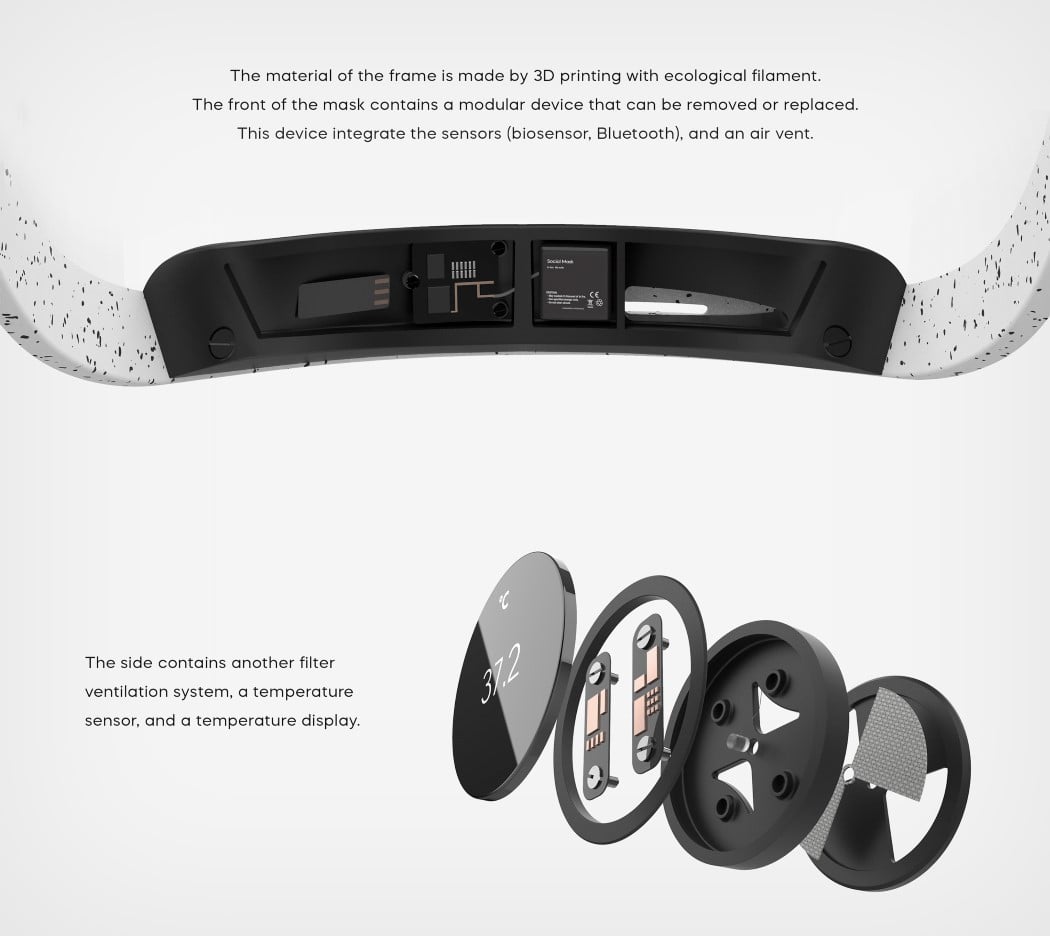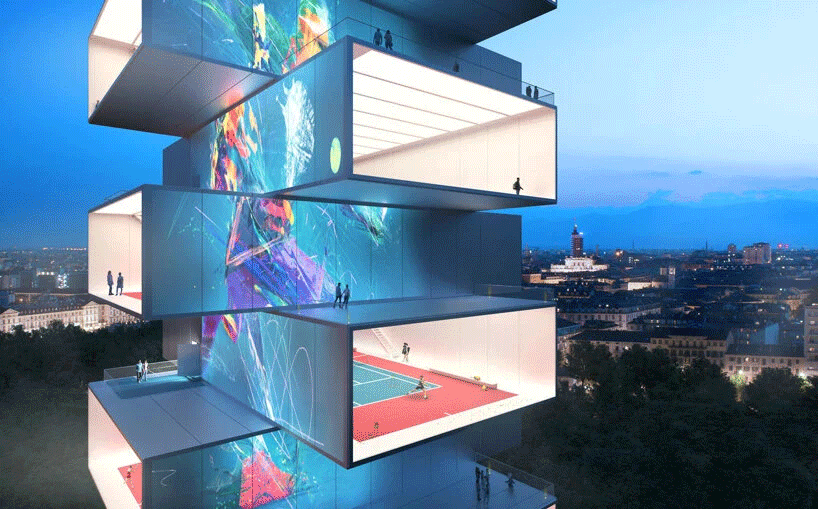
Carlo Ratti has done it again with the Playscaper – a 300 ft tall tower that stacks eight tennis courts! In collaboration with Italo the ambitious concept makes tennis courts more accessible in urban areas where space is often an issue. What makes this more interesting is its flexible nature, Playscraper can be quickly assembled and disassembled which makes it easier to host competitions around the world while reducing construction costs and not requiring a large area.
Playscaper will provide 60,000 ft2 (5,500 m2) of total playing space with its vertically layered courts. The tower’s structure will be made using lightweight stainless-steel which is inspired by the outer shell of a spacecraft and developed by Broad Sustainable Building. “This project would not just create a new icon for sports lovers. It also experiments with a new type of public space, extending vertically instead of horizontally. The tower is easy to install and dismantle and can be easily moved. This flexible approach fits the circular nature of today’s sports competitions, which move from location to location throughout the year,” says architect and engineer Carlo Ratti, founder of CRA and director of the MIT Senseable City Lab.
Designed not just for the players on the court, the long sides of each ‘box’ incorporate an electronic façade that can stream sports matches and other digital content. While on the short sides, transparent walls offer panoramic views of the outdoors. The project has been developed for rcs sport, the sport and media branch of the leading European multimedia publishing group rcs mediagroup. Carlo Ratti Associati worked on the design as part of a larger team of engineers and technical consultants.
Designer: Carlo Ratti Associati
